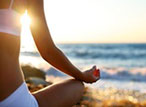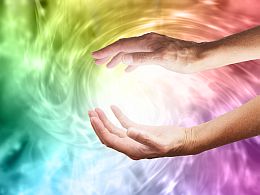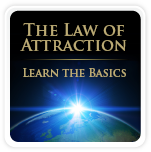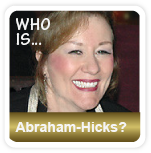-
 Love &
Love &
Relationships -
 Money &
Money &
Success -
 Mind &
Mind &
Spirit -
 Health &
Health &
Wellness -
 Inspirational
Inspirational
Videos -
 Spiritual
Spiritual
Coaching -
 Life
Life
Coaching
Reiki Healing
 What is Reiki healing?
What is Reiki healing?
Reiki healing is probably one of the most known energy healing techniques in the western countries. It is a Japanese healing procedure that is said to increase one’s energy through tapping into a universal energy supply. Compared to other forms of Japanese therapy, Reiki is relatively new and was developed in 1922 by Japanese Buddhist Mikao Usui. The title takes is a conflation of the Japanese term Rei (the power of God / higher power) and Ki (life force energy). Reiki is an energy healing technique to increase/balance ”life force energy”. Although Reiki has a substantial following, no scientific publication exists testifying to its efficacy as a healing procedure. However, the renowned Dr. Oz recognizes its healing benefits, see video below!
How does Reiki healing work?
A person who is happy and experience optimal health has a higher/balanced ”life force energy” than a person who is always tired, or suffers from an illness. A Reiki healer can help increasing ”life force energy” and promote healing by using a technique commonly called palm healing or hands on healing. This energy healing technique treats the whole person on the physical, emotional, mental and spiritual level.
Reiki Session
Reiki is typically conducted between a therapist and a patient. The procedure is conducted with the patient lying down (typically on a yoga table) although this is not necessary and Reiki can also be applied to patients who are sitting or standing. It is also possible to perform Reiki from a distance. Once a person has mastered the technique, they can also apply Reiki to themselves. The patient is fully closed, and the therapist places their palms in various positions on the patient’s body, with each contact held for roughly 5 minutes. During a session, the therapist will often touches at least a dozen positions on the patient’s body, such that each session lasts about one hour. Although many variations of Reiki exist, the most common are Traditional (Japanese) Reiki and Western Reiki. In Traditional Reiki, the instructor follows their own intuition with regard to which positions are the body is addressed (significantly more hand positions are typically employed); in Western Reiki, the instructor follows specific guidelines for where to place their hands.
Everyone can learn Reiki healing
Reiki healing is available to anyone who is interested, despite religious background, intellectual capacity, or spiritual development. This energy healing technique is easy to ”learn”. It is not ”taught”, rather transferred from a Reiki master to a student during an ”attunement” where the student is allowed to tap into the unlimited ”life force energy”. The founder of Reiki, Dr Mikao Usui, recommends that in order for Reiki healing to work, the client must accept responsibility for her /his healing and take active part in it.
Reiki Levels
There are three levels or degrees of Reiki healing. Each level is passed to the student by a Reiki Master during initiation or attunement.
- Reiki Level 1 – After passing this level, the students are now able to practice Reiki healing on themselves and on a partner. They also have an understanding on the Chakras and Endocrine systems.
- Reiki Level 2 – The students have increased their energy level and are now able to perform distant Reiki healing. They also understand the use of Reiki II symbols.
- Reiki Master/Teacher Level – The students are now able to train others. They have received the Master Attunement and understand the use of Reiki III symbols.
What is Reiki healing used for?
Reiki can be used for self-healing, and for healing on others, including animals. It can be used to promote health on all levels – physical, mental, emotional, and spiritual. Because Reiki healing is said to be a capable healing procedure for such a wide-ranging array of maladies, it could hypothetically be used for virtually any malady. Reiki is often used for relaxation and stress reduction. It is also employed to cure colds, stomach aches, headaches, or common viruses, but it has also been utilized to cure more serious illnesses such as cancer.
What are the benefits of Reiki healing?
Advocates of Reiki stress that it provides physical, mental, and emotional benefits through the transmission of energy. In fact, they assert that Reiki can be used to heal virtually any malady that may develop. However, the issue of whether or not Reiki is successful is very divisive. Since no scientific studies have been published proving its validity as a healing procedure, Reiki is commonly believed to have no basis in science. Those who have improved symptoms from Reiki may experience a placebo effect, or perhaps external causes contribute. It should be noted that those who practice Reiki do not ascribe any justification for its efficacy, instead claiming that it stimulates a self-healing process. It is likely that in order to receive any benefit from Reiki, one must be invested in the Japanese philosophy that produced the therapeutic technique. Specifically, this would entail believing in ki, the universal energy force that is commonly believed to exist in Japanese culture. Because Reiki is said to work in conjunction with other (typically more scientific) healing methods, the benefits that may result from Reiki could be the result of such complementary practices.
However, according to testimonials, Reiki healing can be effective in helping with most ailments. It is safe and works in conjunction with other therapeutic or medical healing, to promote recovery and relieve side effects. Toxins, foods, and stress can raise a person’s vibrational frequency, and Reiki healing raises the energetic frequency of a person. In doing so, it assists the body’s own detoxification processes, accelerates the body’s self-healing abilities, and supports the immune system. Other benefits of Reiki healing include stress reduction, a feeling of security, relaxation, well being, and pain relief. It can also help with headaches, sleep problems, high blood pressure, eczema, asthma, and injuries.
Dr. Oz recognizes the benefits of Reiki healing, see video below:


